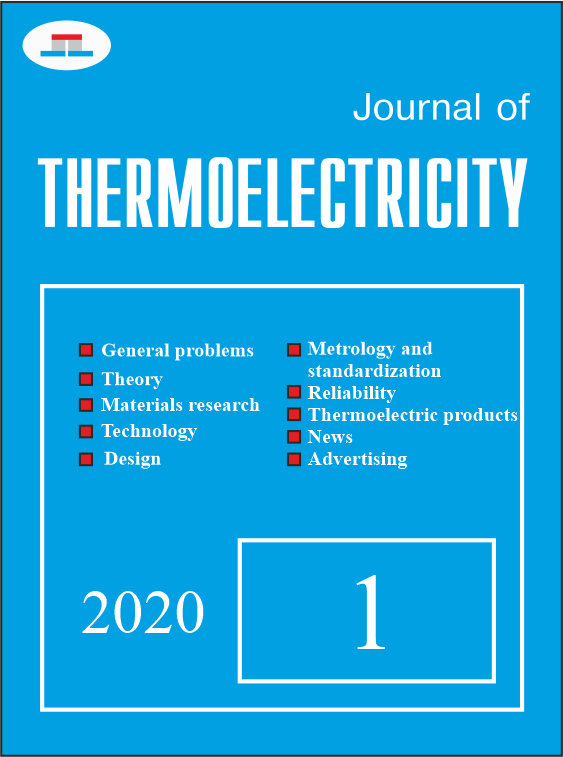On the fundamental difference between thermoelectric composites and doped thermoelectric materials and the consequences it implies
DOI:
https://doi.org/10.63527/1607-8829-2020-1-25-35Keywords:
thermoelectric material, doping, dimensionless thermoelectric figure of merit, percolation threshold, composite, nanoparticles, optimal composition of the compositeAbstract
It is shown that if the effect of doping impurities on a thermoelectric material is reduced only to a change in the concentration of free charge carriers in it, then, for example, for a material based on bismuth telluride even at a temperature of 400 K, it is impossible to obtain a value of the dimensionless thermoelectric figure of merit, which would be far in excess of 1. On the other hand, the dimensionless thermoelectric figure of merit of thermoelectric composites based on semiconductor materials with metal nanoclusters or nanoparticles can significantly exceed 1, if they are indeed composites, that is, materials, each component of which, having entered the composition of the composite, retains its inherent macroscopic values of kinetic coefficients and their temperature dependences. In this case, the increase in the figure of merit of such a thermoelectric composite is reduced to optimizing its composition and solving the problem of the technological possibilities of manufacturing this particular composite. However, it should be borne in mind that the answer to the question about the practical application of such composites, even if they are created and their parameters are stably reproducible, depends on the possibility of creating devices in which they are used, that should have not only high consumer characteristics, but also the corresponding stability, reliability, durability and service life. Bibl. 6, Fig. 6.
References
Goltsman B.M., Kudinov I.A., Smirnov I.A. (1972). Poluprovodnikovyie termoelektricheskiie materialy na osnove Bi2Te3 [Semiconductor thermoelectric materials based on Bi2Te3]. Moscow: Nauka [in Russian].
Klemens P.D. Lattice thermal conductivity (1958). In: Solid State Physics. Advances in Research and Applications. Vol.7, pp. 1-98. New York: Academic Press. Inc. Publishers, New York.
Snarskii А.А., Sarychev A.K., Bezsudnov I.V., Lagar’kov V.N. (2012). Termoelektricheskaia dobrotnost’ obiomnykh nanostructurirovannykh kompositov s raspredelionnymi parametrami [Thermoelectric figure of merit of the bulk nanostructured composites with distributed parameters]. Semiconductors, 46, 677-683 [in Russian].
Gorskyi P.V., Mitskaniuk N.V. (2019). On the temperature dependences of thermoelectric characteristics of bismuth telluride-metal transient layer with regard to percolation effect. J.Thermoelectricity. 3, 5-22.
Kittel Ch. (1978). Introduction to solid state physics. Moscow: Nauka [Russian transl.]
Hu W., Zhou H., Mu X., et al. (2017). Preparation and thermoelectric properties of graphite/Bi0.5Sb1.5Te composites. J. Electronic Materials. – DOI: 10.1007/s11664-017-5908-8.




